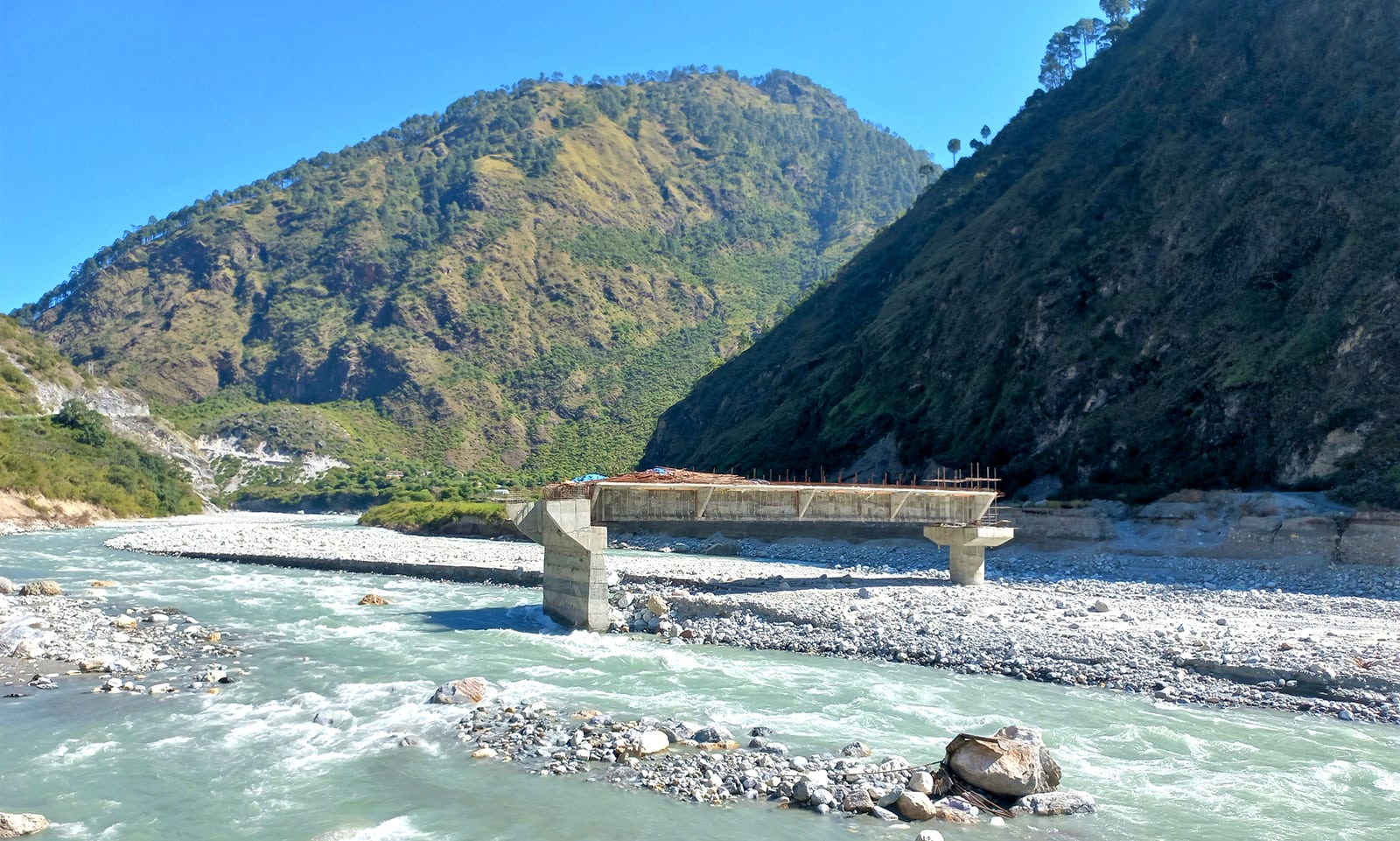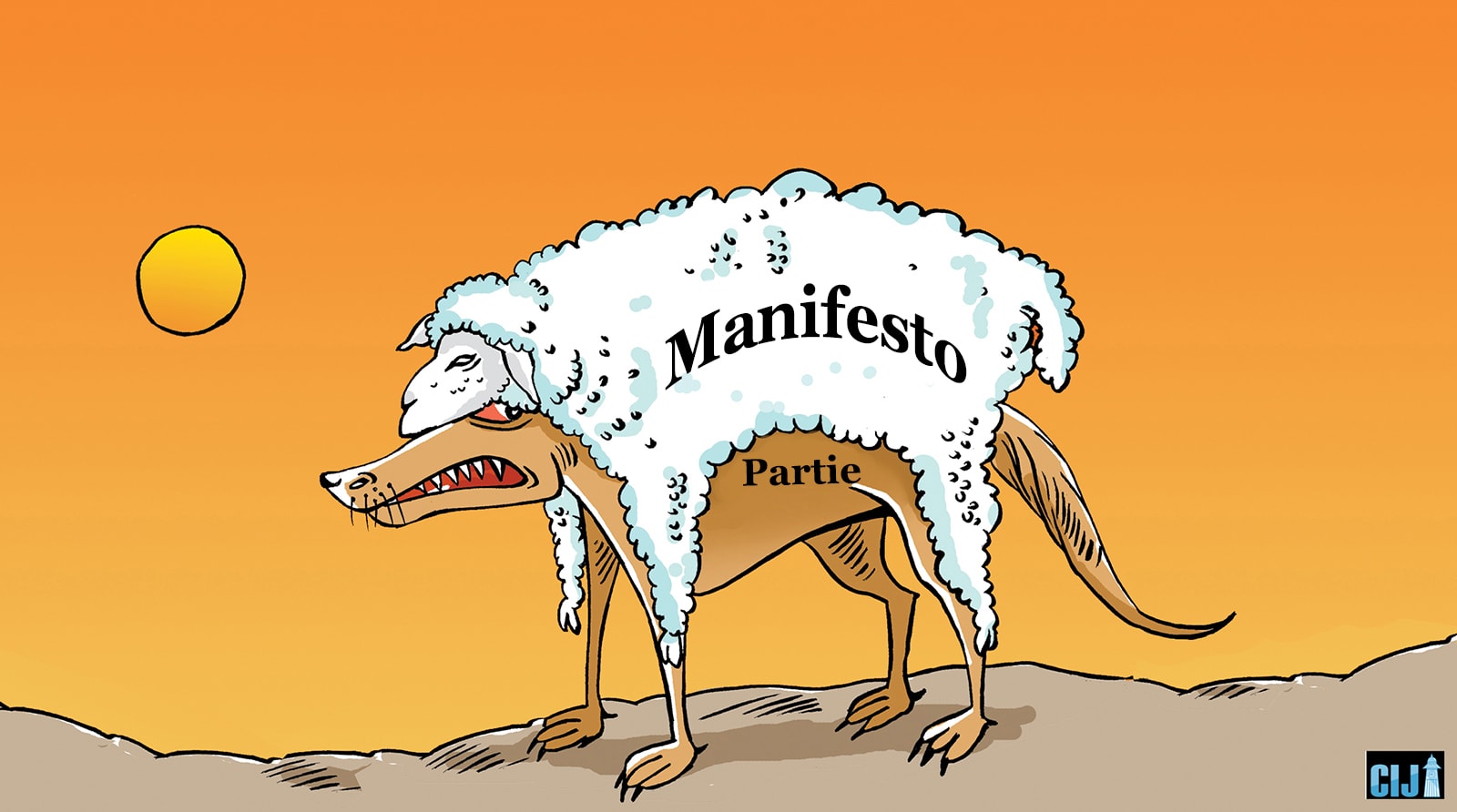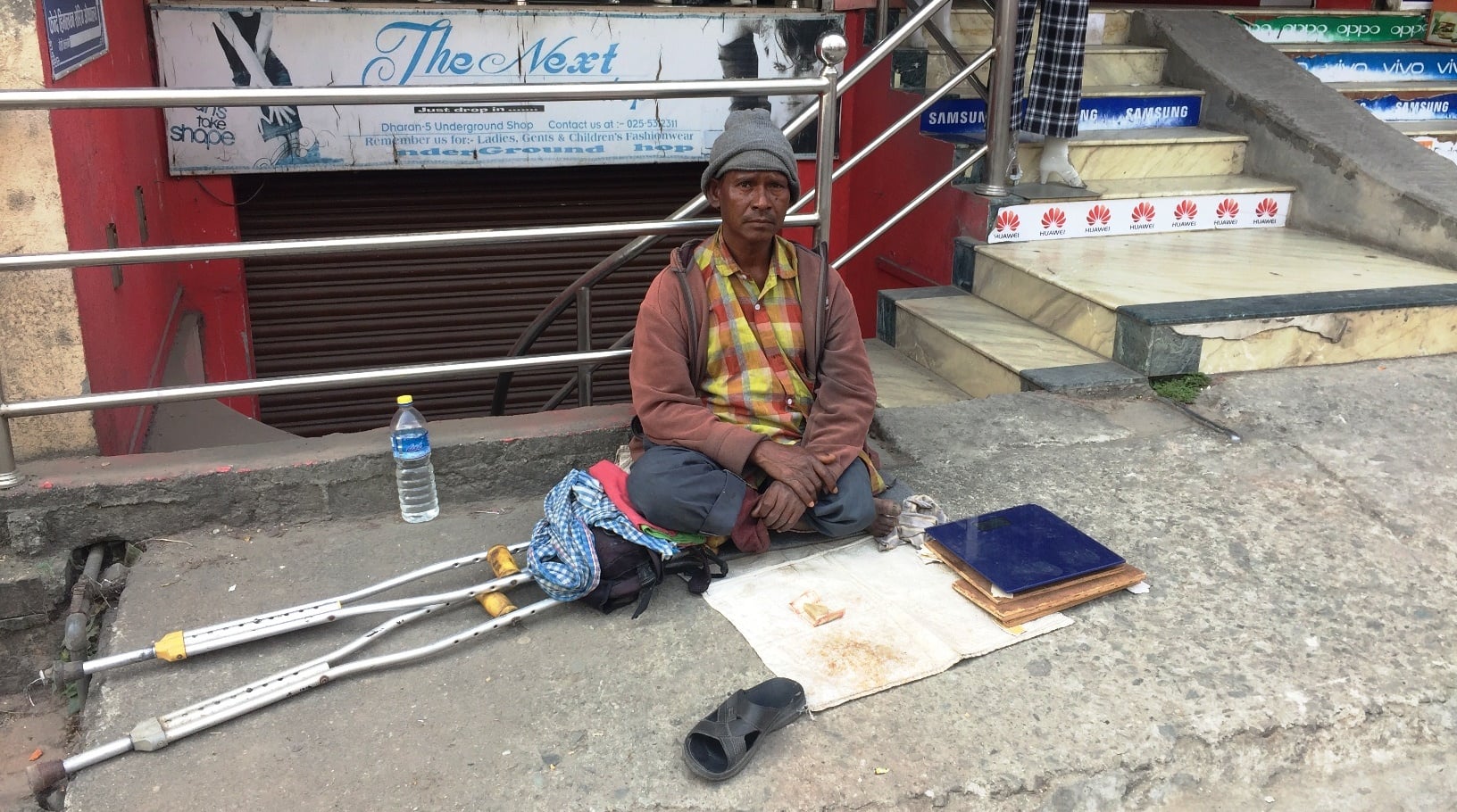Marginalised and impoverished people of Kathmandu and Lalitpur Metropolitan Cities cannot eat two meals a day. But the local representatives do not care about their issues.
Bidya Rai | CIJ, Nepal
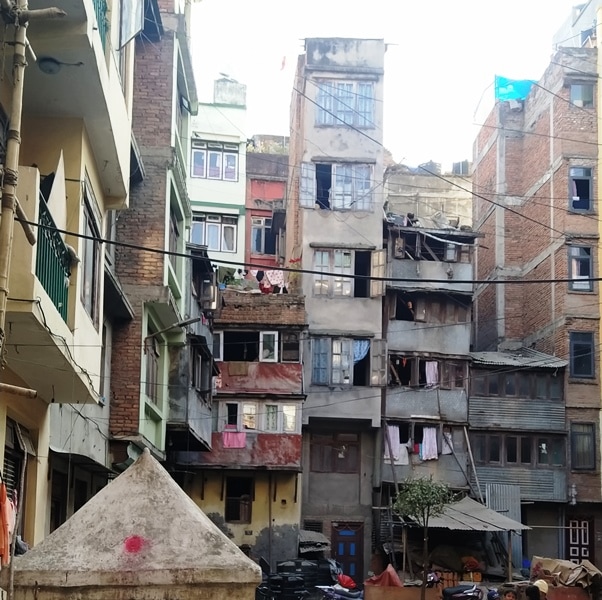
A local neighborhood in Kathmandu Metropolitan City, Ward-27.
Hari Govinda Khadgi, a resident of Inabahal in Kathmandu, roams around the streets of Jyatha looking to get two meals each day. At 80, he is too old to get work, and he has no means to purchase his food and pay his rent.
Khadgi is a local of Kathmandu. Until six years ago, he drove a tempo to survive. These days, however, he finds it difficult even to climb the stairs to his tenement. “Please let me know if there’s any work available,” Khadgi asked this reporter. “It’s very tough, staying without work and food. My children have stopped looking after me, and I cannot drive a tempo or carry loads anymore. But I can still work as a cleaner or a sweeper.”
Kathmandu Metropolitan City has an annual budget of Rs13 billion, but it does not cover the problem Khadgi faces today. Khadgi is a resident of Ward-27. Representatives of Khadgi’s ward are unaware of the problems facing the old people of the ward. Hari Prabha Khadgi, deputy mayor of the metropolitan city, said. “It’s not fair to blame the local government all the time. The residents of the valley are quite smart, and they should be active themselves.”
Ishwar Man Dangol, the chairperson of Ward-15, claimed the metropolitan city had been providing two days of work to the needy. “People get work as per their qualifications. They just need to come to us or contact us through journalists.”
Lalitpur and Bhaktapur districts in the valley also have people who face hardships, financial and otherwise. Dipendra Shakya, 51, a resident of Imadol in Lalitpur, is physically disabled. His speech is also not clear. He needs a helper for as basic tasks as having food and going to the toilet. He lived in a one-room house earlier, but the house was flattened by the earthquake. He has been living in Imadol with his 74-year-old mother ever since. He is taken care of by his mother. “I need a helper, but I can’t afford one. The government must look after me,” said Shakya.
The Muslims of Mangal Bazaar
Saleem Khan, 44, a resident of Mangal Bazaar in Lalitpur, sells bangles on the footpath near the Krishna Mandir. Khan, who does not own a house, said his work cannot provide enough to feed the family and send four children to school.
“I cannot pay the rent if I open a shop inside a building. So I have to depend on the footpath for my business,” Khan said.
The metropolitan city’s policies and hand-to-mouth problem the people face do not match. Lalitpur mayor Chiri Babu Maharjan conceded that he had failed to think about the problems facing the targeted groups, the poor, and the marginalised. “It’s difficult to claim what we’ve done for the urban poor. But we have run some training programs. He added that he was planning to introduce a financial management package to address the basic needs of the urban poor.
There is a settlement of urban poor at Tilganga in Kathmandu. Avinash Deula, 26, a resident of Kathmandu Metropolitan City-8, works as a cargo porter at the Tribhuwan Airport. He earns Rs10,000 a month. His salary is hardly enough to take care of the family of five. He owns a small house but has shifted out of the home because it is too small to shelter him and his brother’s family. Avinash wants to take up a job that pays a better salary than the current one. “It’s not going to sustain me in the long run. I had to take relief materials during the lockdown due to the lack of work,” he said. Avinash wants to set up a business, but he has not received any support from his local representatives yet. Shekhar Deula, a fellow resident of Ward-8, said, “The ward chairperson does not listen to the collective voice of the ward residents. We’ve just become vote banks for the political parties and nothing else.”
Sunar village in trouble
Ganga Risal, 44, a resident of Sunar village, Kalanki wants to take up work. Last year, she visited the ward office asking for training and financial support for work. The ward representatives told her they would come to her village to provide vocational training. But it never happened. “I got neither work nor training from the ward office. What’s more, I faced hardships while obtaining the death certificate of my mother-in-law,” Risal said.
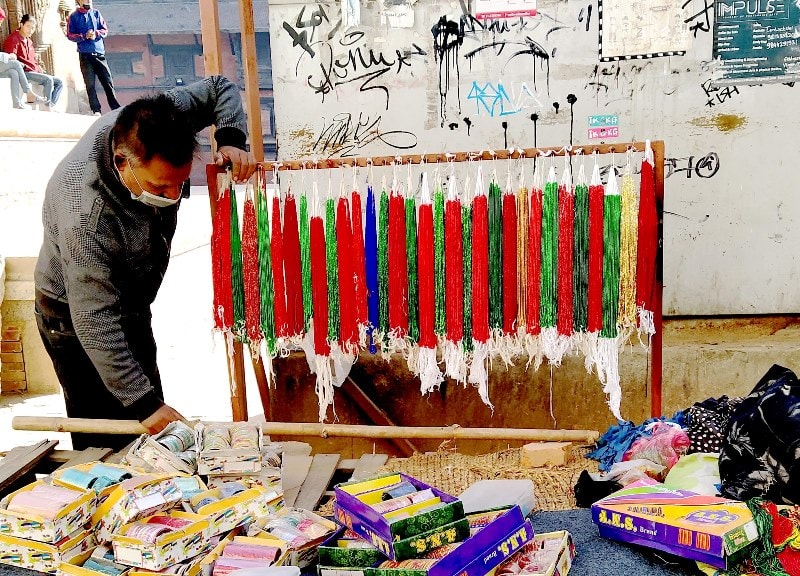
Salim Khan
Her grandmother died in February this year. But it took five months to receive the death certificate.
Sunar village is located 900 metres away from Kalanki Chowk, near the Kalanki Mai Temple. Sunar village is the local village of the Sunar (Viswakarma) community of Kathmandu. There are around 150 Dalit families in the Sunar village, said Urmila Senchury, a Dalit woman member of Kathmandu Metropolitan City-14. Most of the residents are poor like Ganga Risal.
When local representatives were elected in Kathmandu Metropolitan City in 2017, it was expected that the issues of the marginalized would be addressed. However, those expectations were not fulfilled, said Senchury. “Dalit women keep asking for jobs and training, but when I convey this to the ward chairperson, he just gives commitment and nothing else.”
Kanchhi Khadgi, 65, a resident of Guheshwari in Kathmandu, is a high blood pressure patient. She spends 1,200 rupees a month on medication. Since she does not have a regular income, she has a hard time purchasing her medicines. “It’s difficult to manage the money to buy my medicines. I’ve heard that other wards provide money for purchasing medicines. When I asked my local representatives for the same, they did not offer any help,” said Khadgi.
Kanchhi Khadgi’s family of seven shares a house with two other families of her in-laws. Except for the Rs2,000 a month she receives as widow allowance, Khadgi has no other source of income.
There are many such marginalized and poor people within the city who face hardships taking care of their basic needs. However, they do not figure in the list of priorities set by the local representatives. Kathmandu Metropolitan City’s priority list for the fiscal year 2018/19 is a case in point. It includes making the city devoid of street people, the Mayor Ujyalo program, Ranipokhari reconstruction, and No-mask City. But the hardships of Hari Govinda Khadgi, Kanchhi Khadgi, Ganga Risal, Avinash Deula do not find a mention in such lists.
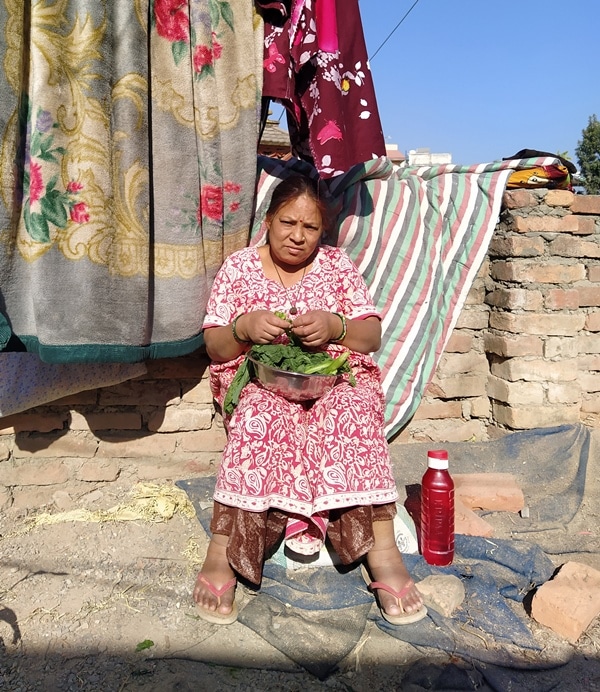
Ganga Risal. Photos, Vidya Rai
“The mayor and the deputy mayor are keen on infrastructure development rather than fulfiling the needs of the marginalized. And those who understand the plight of the marginalized do not have executive roles in the local levels,” said Shyam Krishna Bhurtel, a local administration expert.
The Central Department of Statistics in 2013 said an estimated 2 lakh people lived within Kathmandu Valley alone. They were, the department said, had been deprived of the minimum 1,200 to 2,400 daily calories per each person due to their poverty.
According to the department, the poverty in Lalitpur district came down to 7.6 percent in 2011 from 10.1 percent in 2001. However, it spiked in Kathmandu and Bhaktapur. In Kathmandu, it was 4.4 percent in 2001 and went up to 7.6 percent in 2011. In Bhaktapur, it was 8.7 percent in 2001 and went up to 12.5 percent in 2011. According to Dhundi Raj Lamichhane, director of the department, “The Covid-19 pandemic has added to the distress of those who depend on daily wage labour.”
The Constitution of Nepal, 2015 considers it the responsibility of the state to ensure the protection, empowerment and development of women, Dalits, Adivasis, Janajatis, Madhesis, Tharus, Muslims, oppressed classes, marginalized people and minorities. The Local Government Operation Act, 2074 makes it mandatory for local governments to implement programs that provide direct benefit to targeted groups. However, the legal provisions of the state have failed to materialize for the benefit of the urban poor. According to Indira Bhandari, ward member of Kathmandu-8, “The mayor only envisions big projects. Party members do not have any difficulty getting their work done. But the urban poor remain invisible to the mayor.”
Kathmandu Metropolitan city in the fiscal year 2019/20 allocated a budget of Rs15.5 billion. However, it allocated only Rs1.5 crore for the target groups and ended up spending only Rs1.2 million out of the allocated budget. Similarly, it spent only Rs1.63 lakh out of a total budget of Rs1.45 million allocated for women’s skills development program.
“Local levels do not seem to give any attention to the urban poor,” said Mohna Ansari, a former member of the National Human Rights Commission.

